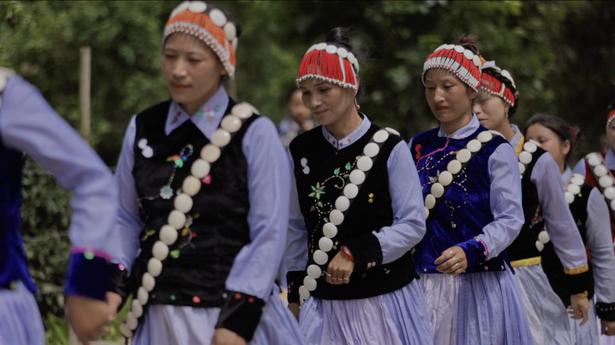
Nibode village just got its first tourists
The Hindu
The tribal village in Arunachal Pradesh welcomed tourists for the first time in its history
Nibode Ji Suku is a place you cannot find on Google. The remote village in hilly Changlang district of Arunachal Pradesh is situated 600 meters above sea level. (Changlang is 25 kilometres away from the Assam border.) Nibode Ji Suku is so inaccessible and unexplored that when its first tourists arrived recently, the entire village with a population of 150-200 turned up to receive the group with songs, dancing and home-cooked food, including rice cakes and fire roasted corn.
The tourists who drove to Nibode Ji Suku in Mahindra Thar from Miao were a part of the Trans Arunachal Drive, curated by the State Board of Tourism, to showcase the improvement of roadways and last-mile connectivity. Nibode is 150 kilometres from Miao, a subdivision in Changlang district and the nearest city with road connectivity.
Earlier, with no roads, Nibode Ji Suku was cut off. To reach Miao, locals would trek through the Namdapha tiger reserve, a biodiversity hotspot in the Eastern Himalayas. Amongst the 150 odd people living in Nobode, only two own mobile phones.
Kavya Saxena, one of the drivers of the team that drove to the village, is also the state president for rural tourism of Arunachal Pradesh (chosen by Women’s Indian Chamber of Commerce and Industry). She says the 150-kilometre drive from Miao, which would normally take around two hours, took the team of expert drivers six hours. “The roads are extremely rocky, with landslides here and there,” she says, adding that “the Government of Arunachal Pradesh wanted the team of drivers to see Nibode Ji Suku so tourists can explore the region in the future.”
Kavya says locals live amidst a jungle, and depend on farming and the forest for livelihood and resources. The villagers also practise archery. They grow their own food, their staple crop being rice. All of them belong to the Yobin tribe and practice Buddhism. The village still has no electricity and with no schools in the region, people can speak Hindi apart from their local tribal language.
“There is no development, but there is no poverty either. The people are farmers and self-sufficient. There is a very rich tribal culture,” says Kavya, adding that the locals are also very fashionable. “They weave their own clothes and make their own jewellery. Hemp textiles may be the in-thing everywhere in the world now: but the people of Nibode Ji Suku have always been wearing clothes made from hemp fabric.” For a quiet little village, it is far ahead of the trends.











